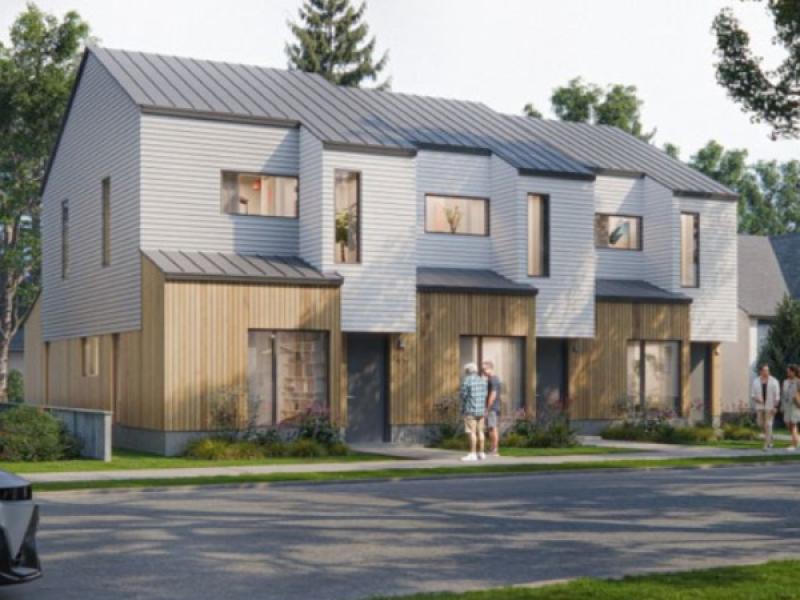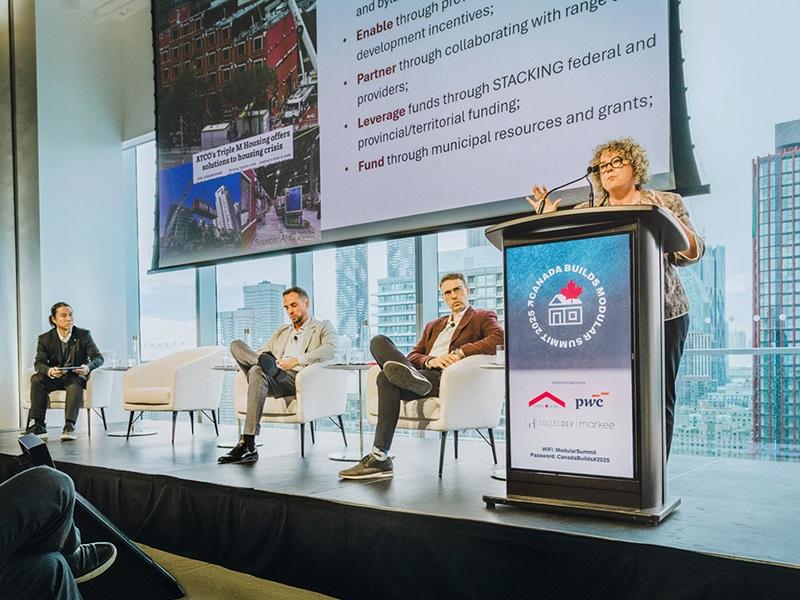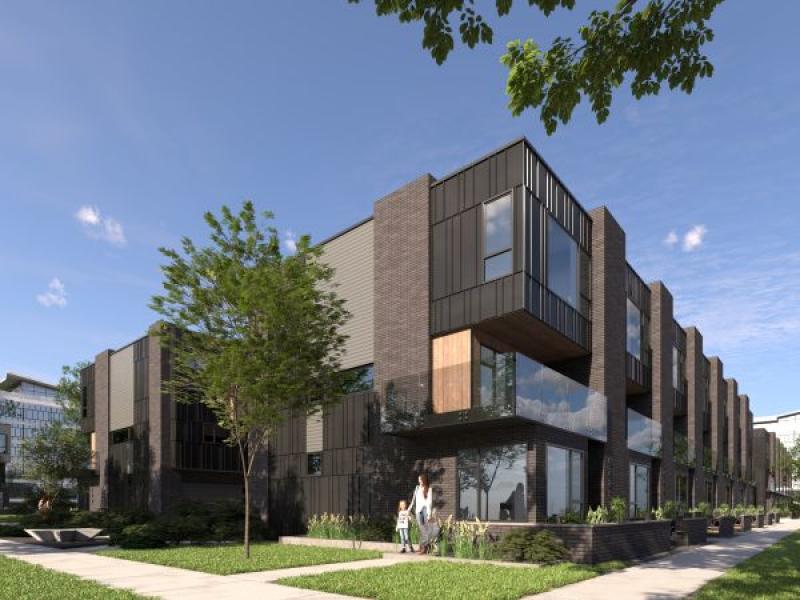
Calgary and Edmonton lead Canada in “missing middle” housing development including stacked townhomes and multiplexes, while Toronto and Vancouver are falling behind, according to the latest data from the Canada Mortgage And Housing Corporation (CMHC).
In a report released Thursday titled How common is “Missing Middle” housing development in Canada?, the federal housing agency examined the state of missing middle housing starts in Vancouver, Edmonton, Calgary, Toronto, Ottawa and Montréal.
Missing middle starts have increased by an average of five per cent per year across the six cities between 2018 and 2023. There was an “exceptional” 44 per cent surge between 2023 and 2024.
But those starts took place primarily in Calgary and Edmonton. When combined, the two cities in Alberta made up 62.5 and 66.4 per cent of the nationwide starts in 2023 and 2024, respectively.
Missing middle housing can play a pivotal role in introducing more housing supply and lowering costs, the Crown corporation said.
It can provide a layer of supply within existing neighbourhoods, is often faster to develop and requires less capital investment than larger projects. For families that cannot afford single-detached homes and find high-rise apartments do not offer enough space, missing middle housing broadens their choices.
Calgary and Edmonton are among the most affordable major housing markets in Canada, while Toronto and Vancouver are among the priciest.
Stakeholders, particularly policymakers at the municipal government level, “can benefit from understanding its prevalence in their communities,” the CMHC said.
Why Prairie cities are leaders in the missing middle
The CMHC defines missing middle as “ground-oriented housing types typically characterized by gentle- to medium density.” Those include accessory suites, row homes, low-rise apartments that are four storeys or less, and residential conversions. As they are often underrepresented in new supply, they are referred to as “missing.”
From 2018 to 2023, the number of missing middle housing starts in the six cities went from 16,653 to 21,555, a 29.4 per cent increase. The starts increased by 44 per cent from 2023 to 2024, reaching 31,194 in 2024. From January to July 2025, there had been 19,357 missing middle housing starts.
In 2024, the sharp incline was driven primarily by Calgary and Edmonton. The two cities in Alberta are leading Canada in missing middle development because of the lower regulatory burden, abundant land availability and favourable policy environments, the CMHC said. Additional factors pushing housing development are strong interprovincial population growth and rental demand.
By contrast, Vancouver and Toronto made up the fewest missing middle starts over much of the period the CMHC examined. In 2024, the two cities combined accounted for 3,944 starts, or 12.6 per cent of the total.
Missing middle starts in Vancouver have declined sharply, CMHC said, falling 56 per cent between 2018 and 2024. A key reason may be the high land costs in the city, which impacts the viability of smaller projects especially in and around the downtown core. Toronto is contending with a similar problem.
Ottawa and Montréal together made up 21 per cent of missing middle construction in 2024. Following the 2022 interest rate hikes, the starts have helped “cushion the downturn in overall development activity in these cities,” the CMHC wrote.
What holds back missing middle development
Governments in Toronto and Vancouver have taken steps to improve the availability of missing middle housing. For example, Toronto city council waived development charges for projects with up to six units.
But obstacles still remain.
The CMHC identified unique bottlenecks for each city. In Toronto for example, developers have historically been larger and focused on high-rise construction, limiting the capacity for the missing middle. The city’s market is facing distinct challenges for missing middle products, such as zoning and site-specific requirements, a long approvals process and fewer cost savings compared to larger projects.
Another issue is that there is no universal definition of missing middle housing, and the concept has been prone to changing over time. Without a consistent definition, it will be difficult to discuss best practices and engage in national dialogue on policies to boost supply, the CMHC continued.
The Crown corporation urges a “shared and consistent definition of the missing middle.”
Cities are slowly implementing initiatives to boost missing middle development, the CMHC said, such as as-of-right zoning permissions. It expects a higher volume of missing middle starts as local markets adapt to new zoning permissions, which will likely be seen with more multiplex starts relative to the historical focus on accessory dwelling units.
The Missing Middle Initiative, an Ottawa-based organization, advocates for policies such as GST rebates on new construction and eliminating capital restrictions on new housing construction to increase the supply of missing middle housing.
Calgary-based mddl, a social enterprise and consultancy, is focusing on raising supply by teaching Canadians about the opportunities and development of middle housing.










